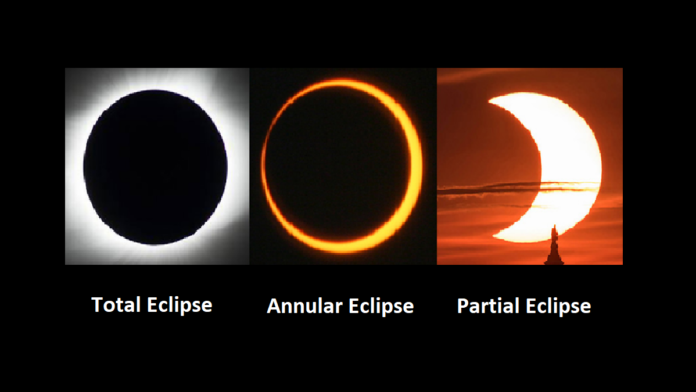Super Rare Phenomenon: Rare hybrid solar eclipse to take place on April 20, 2023
A super rare hybrid solar phenomenon is going to take place on Thursday. People closer to the Western Australia and other parts of the world are going to observe this eclipse.
A once-in-a-decade cosmic phenomenon will dazzle fortunate sky gazers later this week.
What is Hybrid Solar Eclipse?
The hybrid Solar Eclipse is a unique sort of Eclipse in which the Moon’s shadow passes over the Earth’s surface.
Henceforth, implying that where ever you are people will be able to see sun fully veiled by the Moon, resulting in darker daylight.
Event Visibility
The event will be visible from areas of the equator and southern hemisphere. This include Western Australia and Southeast Asia, at roughly 11:30 AM local time. So, for those who are able to watch it will not miss it.
However, people of UK and USA will not be able to see this rare phenomenon as per Royal Observatory.
According to a study, the previous hybrid solar eclipse occurred in November 2013. While, the next one will not occur until November 2031. A solar eclipse occurs when the Moon passes between the Sun and our planet, obstructing our view of the Sun.
However, depending on how much of the Sun’s surface is really blocked; there are numerous types of solar eclipses.
Types of Solar Eclipse
A ‘total’ solar eclipse happens when the Moon totally blocks the face of the Sun. However, an ‘annular’ solar eclipse occurs when the Moon looks somewhat smaller than the Sun, leaving a dazzling ring of light around the Moon’s silhouette.
Meanwhile, a ‘partial’ solar eclipse occurs when the Moon just partially covers the Sun.
A hybrid solar eclipse combines a complete and annular solar eclipse, although it is preceded by a partial solar eclipse as the Moon climbs into position.
Locations Observing the event
According to Dr Greg Brown, astronomer at the Royal Observatory Greenwich, “This eclipse is only viewable from Australia, East Timor, Indonesia, the southern Indian Ocean, and the western Pacific Ocean, while the associated partial eclipse will also be seen to a few surrounding locations.”
On Thursday, the Moon’s shadow will span hundreds of miles across the Earth, and every place within this shadow will see at least a partial solar eclipse. The line of totality is the center point of this shadow, and it is along this route that Earthlings will view either a total solar eclipse or an annular solar eclipse.
As Earth is round and certain places in the World are near to the Moon as compared to others. Due to this whether people will see total or annular solar eclipse totally depends on where they are located.
Therefore, when the Sun, Moon, and Earth align, those in Western Australia, East Timor, and Indonesia will be closer to the Moon. As a result, persons in these areas will be in a prime position to witness a total solar eclipse.
Meanwhile, people will observe an annular solar eclipse due to the additional distance. The Moon will seem smaller and will not cover as much of the Sun, resulting in an annular solar eclipse.
How to View Solar Eclipse?
Skywatchers should avoid looking directly at the Sun with their naked eyes during the eclipse, even if they are wearing sunglasses.
Alternatives include using a simple pinhole projector, solar eclipse viewing glasses, which may be purchased online, or special solar filters. “The easiest way to see an eclipse is via a pinhole in a piece of card,” according to Dr Robert Massey of the Royal Astronomical Society.
“An image of the Sun may then be projected behind it on another piece of card. You should never, ever stare through the pinhole. Mirror projection is another common way for seeing an eclipse,” said Dr Massey.
“You’ll need a small, flat mirror in a way to place it in the Sun so that it reflects sunlight into a room. Then you can watch it on a wall or some form of flat screen,” he explained.
“Eclipse glasses with a recognized safety mark are also available from professional astronomy providers.”
Future Predictions
The next total solar eclipse will not be seen in the UK for another 67 years. The solar eclipse to occur on September 23, 2090 will be the first total solar eclipse seen from Britain, since August 11, 1999. Moreover, this eclipse will be first viewable from Ireland since May 22, 1724.
The next solar eclipse in the United States, however, will occur on April 8, 2024, crossing from Texas to Maine. In portions of the United Kingdom, this will be observed as a partial eclipse shortly before sunset.


